Descaling Impact
Our global manufacturing capabilities, factory support staff and decades of experience uniquely qualify us to solve your descaling challenges. Take advantage of our local sales engineers that specialize only in spray technology.
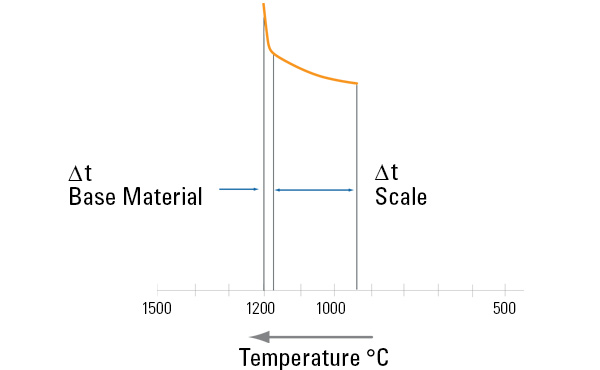
Understanding Descaling Impact
In order for descaling nozzles to work effectively, it is important to understand the role water plays in the process. The water applied to the surface causes both the scale and the base material to shrink. This shrinkage forms cracks in the surface and separation between the scale and the base material. The force of the spray produced by the descaling nozzles causes the water to penetrate the cracks and reach the base material.
The heat from the steel surface causes a local explosion of the water as steam is formed. The combination of the explosion and the impact force detaches the scale from the steel surface and the water washes away the scale.
Steel grade, furnace temperature, soaking time and other factors all play a role in scale formation and how difficult it will be to remove. The effectiveness of the removal process is dependent on the impact and spray pattern of the water applied by the descaling nozzles on the moving strip of steel.
Calculating Impact for Descaling Nozzles
|
Total impact is estimated with this equation: Ft: Total Force
ρ: Fluid Density F = .0527 • gpm • psig.5 F (total impact), is expressed in units of lbs. (N). |
There are two types of impact:
|
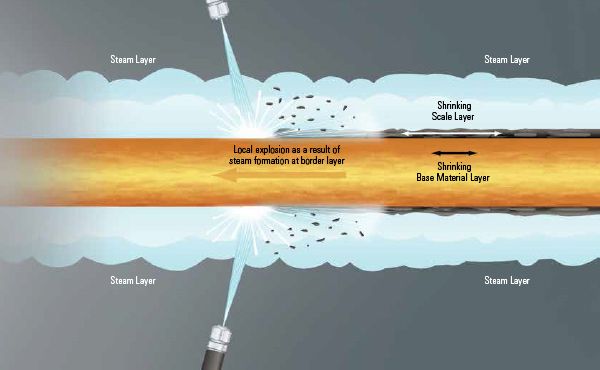
Specific Impact Can Be Reduced by a Number of Factors
- Loose soil
- Standing liquid
- Deceleration – As sprays travel through the air to reach the target surface, drops decelerate and the momentum of the spray is reduced. Nozzle size, pressure, spray style and spray height all play a role in deceleration and how to overcome it
- Spray height – Closer target distances result in higher normalized impact pressure. It also results in smaller coverage area per nozzle. Lowering spray height is not a quick and easy way to achieve better descaling
-
Pressure – Increasing pressure will also increase total impact, but it also affects spray pattern. The increase in impact pressure is often not as much as expected
-
Nozzle turbulence – Turbulence has a negative impact on nozzle performance, the wear life of the nozzle and header and descaling effectiveness. Increasing pressure increases nozzle turbulence
All of these factors affect impact and descaling effectiveness so it is important to achieve balance between them to optimize your system. To accomplish this, we head to our spray laboratories to measure the impact and spray patterns of our descaling nozzles. We use proprietary equipment to collect and analyze data. We do not rely on calculated data because theoretical equations cannot factor in the effects of turbulence, spray rebound or splashback – all which can have a significant effect on impact.
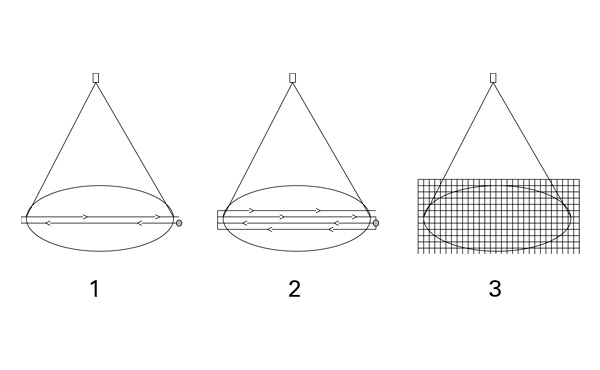
Why and How We Measure Impact
As noted earlier, calculated data doesn’t account for splashback. We know this because we compare theoretical data to measured data. To ensure accurate impact measurement, we designed test equipment that measures data in two axes so we can precisely determine impact in pounds force, lateral distribution, coverage, transverse distribution and spray thickness.
HERE’S HOW OUR IMPACT TESTER WORKS:
- The load cell first moves to the outside of the spray pattern.
- Then it transverses through the spray, taking measurements at predetermined intervals.
- The load cell continues going back and forth through the spray unit until the entire spray area has been covered.
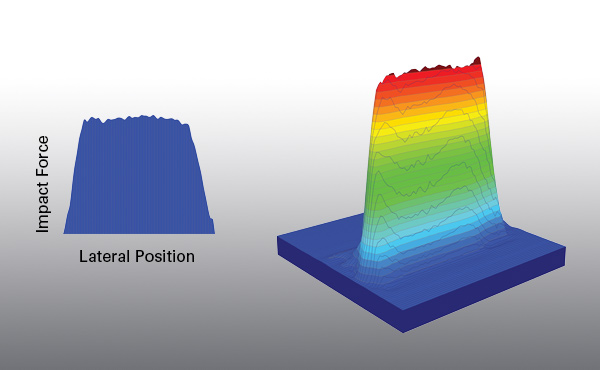
Understanding Impact Data
Data from our testing looks like this:
Impact Line Plot - The lateral impact plot provides accurate coverage information – both total coverage and effective coverage. It also shows the evenness of the impact distribution across the spray pattern.
Impact Profile - Our data also shows a 3D isometric view of the spray. This is the data in raw form. There is no smoothing nor fitting. In addition, we produce a contour plot which provides the total spray thickness and area. A view of the specific impact provides the impact pressure values.
What You Need to Know to Analyze Impact Data
- Is impact calculated or measured? Measured data is always superior.
- When looking at specific impact values, what spray area footprint dimensions were used? Total spray area or effective spray area? Was this area measured or calculated?
Even if all values are measured, they are not measured the same way. Nozzle feeds are different, impact equipment is different and analysis methodology varies. It is not possible to compare the values collected by one manufacturer to the values collected by another manufacturer. The best way to compare nozzle performance is to run tests on the same equipment.
We invite you to use our laboratories for your analysis.
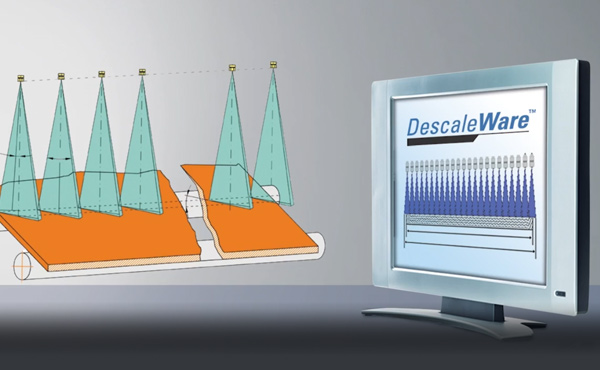
Descaling Header Design
To ensure optimal descaling, we use DescaleWare®, our propriety software, for descale header layout. DescaleWare uses impact and coverage data collected in our spray laboratories to identify the descaling nozzles and header layout that will provide the performance needed for your specific operation.
User-specific conditions such as slab or billet width, overlap, lead angle, twist angle, flow rate and pressure are entered. The software determines which descaling nozzles provide the desired performance and graphically displays the header layout. Nozzle type, spacing, coverage, spray height, lead angle and impact values are shown on the layout.
BENEFITS:
-
Ensures headers are properly sized to match performance requirements
-
Code compliance as required
-
Single-source supply of headers and nozzles eliminates potential integration problems
-
CFD modeling available to validate header design and reduce pressure loss and turbulence

